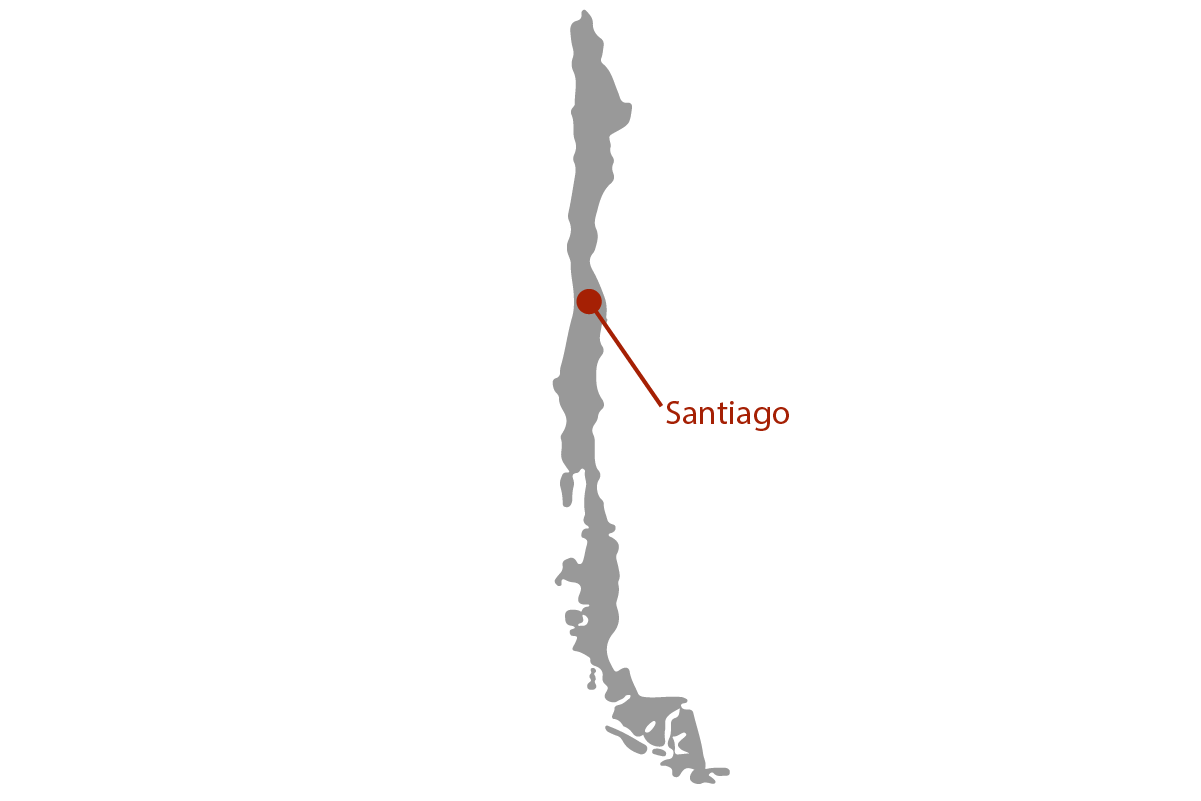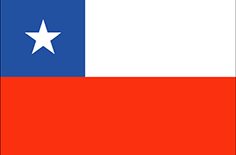Home of world famous poet and Nobel Prize winner Pablo Neruda as well as the military dictator Augusto Pinochet, Chile's history and culture are as diverse as the country itself: spanning over 5,000kms along the coast of South America, every climatic zone apart from tropical forests can be found here. From the driest place on earth in the North to the ice caps of Western Patagonia, Chile is a unique melting pot of geography, culture, ethnicities, and traditions. To explore this amazing country, bring good shoes, a large appetite, and good travel insurance for Chile!
The North of Chile is home to the driest desert in the world – the Atacama. Due to its dryness and elevation, this is one of the best locations for star gazing in the world, and there are a few observatories offering 'tours' of the night sky. This is also the place to explore the Chilean part of the Andean Road system. Built by the Incans, this road systems spans over 30,000kms through 5 countries, and still survives to this day.
Central Chile is the heart of the country with the major cities being located here. Santiago, the capital and largest city, is not only great base for exploring the rest of the country, but also the cultural and economic center of Chile. There are lots of museums, parks, churches and cool plazas to explore, but what really makes Santiago unique is that you can go skiing in the morning in the Andes and then relax on a warm beach in the afternoon!
Santiago also offers convenient transport to Rapa Nui, commonly known as Easter Island. Home to the iconic Moai statues, the Easter Islands and its inhabitants are still shrouded in mystery. Archaeological evidence on the island points to a flourishing culture with supreme accomplishments followed by a sudden (and as of yet, unexplained) decline and end. While the main attraction is the statues located along the coast, you can also enjoy some excellent diving here. For adventure travellers, the island offers a large and very unexplored system of caves, but be sure to have the right equipment and good travel insurance before you go off exploring.
The other major city to visit while in Central Chile is Valparaíso. Valparaíso is a Pacific town built into a mountain. The Historic Quarter of the Seaport City itself is a UNESCO World Heritage Site showcasing the architectural and urban development of Latin America in the late 19th-century. Visiting Valparaíso is less about museums and locations, and more about views and just bumbling around this crazy town. While you are here, make sure to make ample use of the ascensores, which are cable pulled elevators that connect the harbor to the hills, and are the local equivalent of a Venetian Gondola!
Leaving the big cities, you enter Chile's most productive wine region. Chilean wines are competing with wines from California, France and Australia and while you are here make sure to visit a winery or two to find out why. There are several companies that offer wine tours starting either in Valparaíso or Santiago, meaning you may be able to try a few more wines than one or two if you organize it ahead of time!
As you travel further south, the terrain becomes more rugged and the weather tends become quite a bit colder. In its furthest southern region, Chile shares Patagonia with neighboring Argentina, a beautiful but desolate country that attracts mountaineers and adventure seekers from all over the globe. If you do choose to explore this region in more detail, make sure to plan ahead of time, have Chile travel insurance and bring the right equipment.
Compared to its neighbors, Chile is more relaxed in many respects. The driving etiquette is better, bribing is generally completely unacceptable, and the country is quite safe. Food is a unique blend between Andean traditional foods, Spanish foods, and some German cuisine and with 5000kms of coastline, you can find a wide range of delicious seafood - note that locals tend to eat shellfish raw which is not recommended for travellers, unless you have an iron stomach. Make sure to try some different empanadas (filled pastry packets) as well as some of the desserts brought in by German immigrants and modified to the local taste, most notably the 'Berlin' which in Chile is a ball of dough filled with dulce de membrillo, a delicious jelly made from quince.
Chile has a lot to offer to the discerning traveller: stunning combinations of sea and mountains, rugged and desolate terrain, the Easter Islands, untouched mountain peaks, fine wines, good food, and bustling cities with vibrant nightlife. It is easy to see why the amount of tourists to Chile has been steadily increasing over the last few years.
Home of world famous poet and Nobel Prize winner Pablo Neruda as well as the military dictator Augusto Pinochet, Chile's history and culture are as diverse as the country itself: spanning over 5,000kms along the coast of South America, every climatic zone apart from tropical forests can be found here. From the driest place on earth in the North to the ice caps of Western Patagonia, Chile is a unique melting pot of geography, culture, ethnicities, and traditions. To explore this amazing country, bring good shoes, a large appetite, and good travel insurance for Chile!
The North of Chile is home to the driest desert in the world – the Atacama. Due to its dryness and elevation, this is one of the best locations for star gazing in the world, and there are a few observatories offering 'tours' of the night sky. This is also the place to explore the Chilean part of the Andean Road system. Built by the Incans, this road systems spans over 30,000kms through 5 countries, and still survives to this day.
Central Chile is the heart of the country with the major cities being located here. Santiago, the capital and largest city, is not only great base for exploring the rest of the country, but also the cultural and economic center of Chile. There are lots of museums, parks, churches and cool plazas to explore, but what really makes Santiago unique is that you can go skiing in the morning in the Andes and then relax on a warm beach in the afternoon!
Santiago also offers convenient transport to Rapa Nui, commonly known as Easter Island. Home to the iconic Moai statues, the Easter Islands and its inhabitants are still shrouded in mystery. Archaeological evidence on the island points to a flourishing culture with supreme accomplishments followed by a sudden (and as of yet, unexplained) decline and end. While the main attraction is the statues located along the coast, you can also enjoy some excellent diving here. For adventure travellers, the island offers a large and very unexplored system of caves, but be sure to have the right equipment and good travel insurance before you go off exploring.
The other major city to visit while in Central Chile is Valparaíso. Valparaíso is a Pacific town built into a mountain. The Historic Quarter of the Seaport City itself is a UNESCO World Heritage Site showcasing the architectural and urban development of Latin America in the late 19th-century. Visiting Valparaíso is less about museums and locations, and more about views and just bumbling around this crazy town. While you are here, make sure to make ample use of the ascensores, which are cable pulled elevators that connect the harbor to the hills, and are the local equivalent of a Venetian Gondola!
Leaving the big cities, you enter Chile's most productive wine region. Chilean wines are competing with wines from California, France and Australia and while you are here make sure to visit a winery or two to find out why. There are several companies that offer wine tours starting either in Valparaíso or Santiago, meaning you may be able to try a few more wines than one or two if you organize it ahead of time!
As you travel further south, the terrain becomes more rugged and the weather tends become quite a bit colder. In its furthest southern region, Chile shares Patagonia with neighboring Argentina, a beautiful but desolate country that attracts mountaineers and adventure seekers from all over the globe. If you do choose to explore this region in more detail, make sure to plan ahead of time, have Chile travel insurance and bring the right equipment.
Compared to its neighbors, Chile is more relaxed in many respects. The driving etiquette is better, bribing is generally completely unacceptable, and the country is quite safe. Food is a unique blend between Andean traditional foods, Spanish foods, and some German cuisine and with 5000kms of coastline, you can find a wide range of delicious seafood - note that locals tend to eat shellfish raw which is not recommended for travellers, unless you have an iron stomach. Make sure to try some different empanadas (filled pastry packets) as well as some of the desserts brought in by German immigrants and modified to the local taste, most notably the 'Berlin' which in Chile is a ball of dough filled with dulce de membrillo, a delicious jelly made from quince.
Chile has a lot to offer to the discerning traveller: stunning combinations of sea and mountains, rugged and desolate terrain, the Easter Islands, untouched mountain peaks, fine wines, good food, and bustling cities with vibrant nightlife. It is easy to see why the amount of tourists to Chile has been steadily increasing over the last few years.
 †
†



